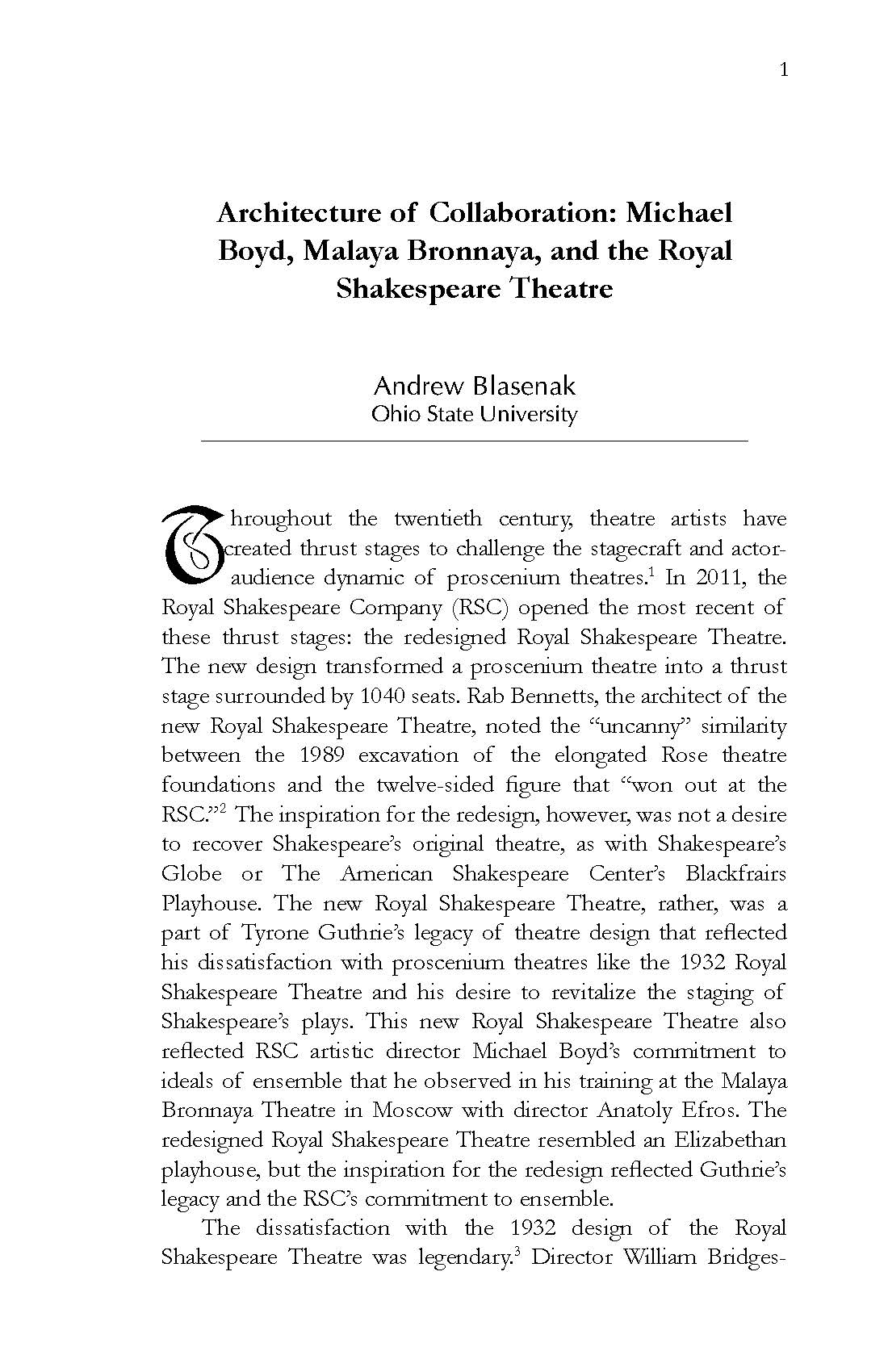Architecture of Collaboration: Michael Boyd, Malaya Bronnaya, and the Royal Shakespeare Theatre
Main Article Content
Abstract
Throughout the twentieth century, theatre artists have created thrust stages to challenge the stagecraft and actoraudience dynamic of proscenium theatres.1 In 2011, the Royal Shakespeare Company (RSC) opened the most recent of these thrust stages: the redesigned Royal Shakespeare Theatre. The new design transformed a proscenium theatre into a thrust stage surrounded by 1040 seats. Rab Bennetts, the architect of the new Royal Shakespeare Theatre, noted the “uncanny” similarity between the 1989 excavation of the elongated Rose theatre foundations and the twelve-sided figure that “won out at the RSC.”2 The inspiration for the redesign, however, was not a desire to recover Shakespeare’s original theatre, as with Shakespeare’s Globe or The American Shakespeare Center’s Blackfrairs Playhouse. The new Royal Shakespeare Theatre, rather, was a part of Tyrone Guthrie’s legacy of theatre design that reflected his dissatisfaction with proscenium theatres like the 1932 Royal Shakespeare Theatre and his desire to revitalize the staging of Shakespeare’s plays. This new Royal Shakespeare Theatre also reflected RSC artistic director Michael Boyd’s commitment to ideals of ensemble that he observed in his training at the Malaya Bronnaya Theatre in Moscow with director Anatoly Efros. The redesigned Royal Shakespeare Theatre resembled an Elizabethan playhouse, but the inspiration for the redesign reflected Guthrie’s legacy and the RSC’s commitment to ensemble.
